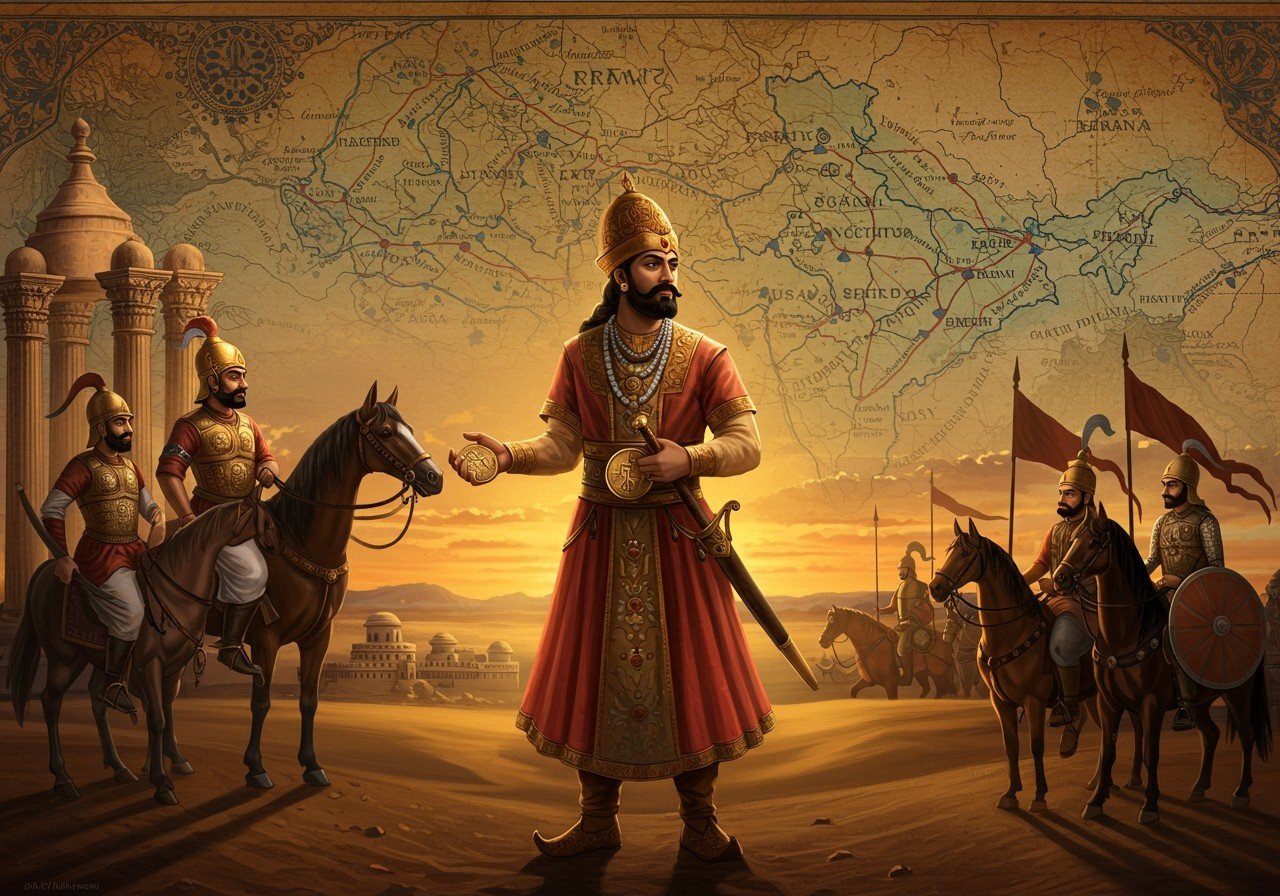
This article delves into the historical relationship between the Sakas and the Western Satraps, exploring how these groups shaped Indian history. The Sakas, originating from Central Asia, migrated to India and significantly influenced the rule of the Western Satraps.
Background on the Sakas
The Sakas, also known as the Indo-Scythians, migrated from Central Asia to India around the 1st century BCE. Driven by climatic shifts and pressure from other tribes, these nomadic people were renowned for their equestrian skills and military prowess. Their arrival had a profound impact on the existing kingdoms and societies of India.
- Climatic changes and pressure from other tribes prompted their migration into the Indian subcontinent. This migration led to significant cultural exchange and power shifts within the region.
- Their expertise in warfare and horsemanship gave them a distinct advantage, allowing them to establish powerful kingdoms and influence local populations. They introduced new military tactics and strategies.
- The Sakas’ integration into Indian society resulted in a fusion of cultures, impacting local customs, languages, and artistic styles. Their influence is visible in various aspects of Indian culture.
Saka rulers, such as Maues and Azes, carved out substantial territories within India, introducing new artistic traditions, languages, and customs. Their presence significantly altered established trade routes and economic structures.
Formation of the Western Satraps
Emerging after the Saka migration, the Western Satraps, also known as Kshatrapas, established their rule in western India, encompassing regions like Gujarat and Maharashtra. The term “Satrap,” derived from Persian administrative terminology, signifies their influence. Prominent figures among the Western Satraps include Chastana and Rudradaman I.
- The Western Satraps held sway over significant portions of western India, including Gujarat and Maharashtra, playing a vital role in shaping the region’s political and cultural landscape for centuries. Their rule saw advancements in infrastructure and administration.
- The term “Satrap,” borrowed from Persian governance structure, indicates the administrative organization adopted by these rulers. This structure facilitated efficient governance and tax collection.
- Key figures like Chastana and Rudradaman I played pivotal roles in consolidating and expanding the Western Satrap kingdom. Their reigns are marked by significant military achievements and infrastructural developments.
The Western Satraps implemented a well-structured administration, employing military strategies to defend their territories. Their economic policies fostered trade and prosperity. Furthermore, they extended their patronage to both Buddhism and Hinduism.
Cultural Integration and Influence
The Sakas and Western Satraps gradually assimilated local traditions and customs. They constructed stupas and temples, showcasing their architectural skills. Their artistic influence is evident in coinage, sculptures, and paintings.
- The construction of stupas and temples reflects the Western Satraps’ adoption of local religious practices and architectural styles. These structures serve as testaments to their cultural integration.
- Their artistic influence is visible in various forms, including coinage, sculptures, and paintings, demonstrating a fusion of Saka and Indian artistic traditions. This fusion created unique artistic expressions.
- Prakrit and Sanskrit, alongside Saka dialects, were used in administration and cultural expressions, showcasing the linguistic diversity of the period. This linguistic blend contributed to the evolution of regional languages.
A fusion of Buddhist, Hindu, and Zoroastrian practices characterized their religious landscape. Trade played a vital role in facilitating cultural exchange between the Sakas, Western Satraps, and other Indian kingdoms. Poojn.in offers a variety of incense sticks reminiscent of those used in ancient rituals.
Legacy and Historical Significance
The intertwined history of the Sakas and Western Satraps left an enduring legacy. Their architectural and artistic contributions continue to inspire modern Indian culture. They played a crucial role in the development of regional languages and scripts.
- Their architectural and artistic achievements continue to influence contemporary Indian culture, showcasing the lasting impact of their aesthetic sensibilities. Poojn.in offers exquisite brass statues, reminiscent of the artistic traditions of this era.
- The Sakas and Western Satraps contributed significantly to the development of regional languages and scripts, shaping the linguistic landscape of western India. Their influence can be seen in modern-day languages.
- The Western Satraps played a pivotal role in shaping the political dynamics of western India, leaving a lasting impact on the region’s governance and administrative structures. Their reign marked a significant period in western India’s political history.
Archaeological findings, such as coins, inscriptions, and monuments, provide concrete evidence of their presence and influence in India. They played a significant role in the propagation of Buddhism and maintained diplomatic ties with other Indian kingdoms. Poojn.in provides traditional sindoor (vermilion), a significant element in Hindu rituals.
Conclusion
The connection between the Sakas and Western Satraps stands as a testament to the fusion of cultures and the impact of migrations in shaping ancient India. From 35 to 415 CE, the Western Satraps, influenced by the Sakas, governed a significant portion of western and central India, leaving a lasting legacy on the region’s cultural, linguistic, and political landscape.


